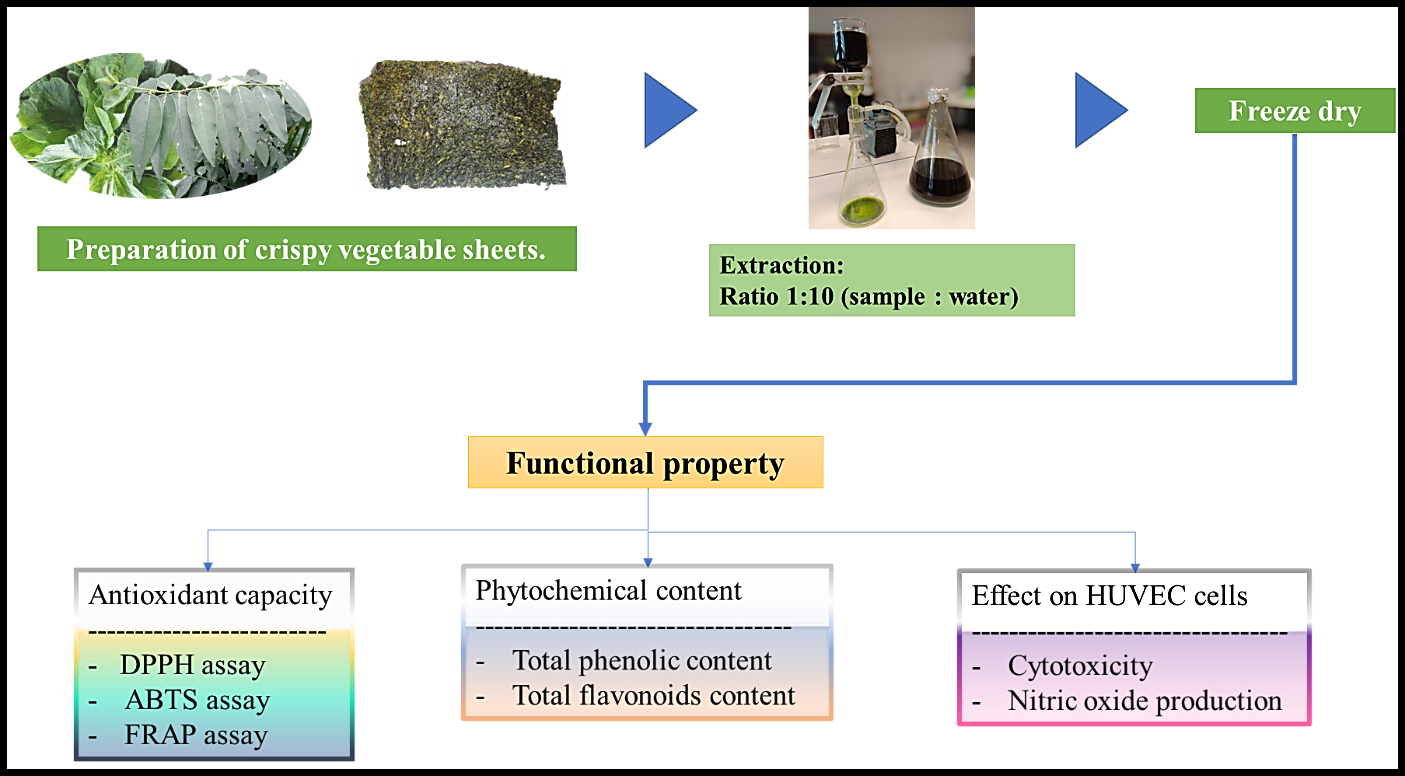Evaluation of the antioxidant activity and nitric oxide production effect of formulated crispy vegetables from thermal processing of Amaranthus viridis and Sauropus androgynous
DOI:
https://doi.org/10.31989/ffhd.v13i9.1116Abstract
Background: Amaranthus viridis and Sauropus androgynous are common edible vegetables consumed by the natives of Asia. This research aimed to carry out a comparative evaluation on the antioxidant activity and nitric oxide production effect of crispy vegetables formula of A. viridis and S. androgynous made by thermal processing.
Methods: A. viridis and S. androgynous fresh vegetable leaves were dried, processed and formulated into crispy vegetables: A. viridis crispy vegetables, S. androgynous crispy vegetables and 50:50% (w/w) mixture of A. viridis and S. androgynous crispy vegetables. Total phenolic and flavonoids contents of the three crispy vegetables were evaluated using Folin Ciocalteu colorimetric and aluminum chloride assay.
Results: S. androgynous crispy vegetable had higher phenolic (36.55 ± 0.01 mg GAE/g) and flavonoid (81.17±0.00 mg QE/g) contents than A. viridis crispy vegetables (16.55±0.00 mg GAE/g and 40.58±0.01 QE/g respectively) and 50:50% mixed crispy vegetable formula of A. viridis and S. androgynous (26.01 ± 0.00 mg GAE/g; 59.38±0.00 QE/g respectively). S. androgynous crispy vegetable sheet also demonstrated a better antioxidant activity against the radical effect of DPPH (15.43±0.07%), ABTS (34.04±0.05%) and FRAP (1.73±0.01) than A. viridis (13.45±0.11%, 26.35±0.17 &; 1.56±0.01 respectively) and was comparable with mixed formula (14.23±0.43%; 32.31±0.12%, 1.81±0.03 respectively). A significant dose-dependent cytotoxic effect was induced by the three crispy vegetables with IC50 of 8.33±0.69, 7.84±0.35, 7.86±0.33 respectively on HUVECs. The results also showed that mixed crispy vegetables (50:50%) promoted endothelial nitric oxide production.
Conclusion:The study concludes that the antioxidant activity of the crispy vegetables reflects the total phenolic and total flavonoid content as their functional properties. Our findings also suggest that thermal processing of foods could have significant effect on the antioxidant activity of functional foods; however, A. viridis and S. androgynous prepared in crispy form may pose no potential threat to the body like the fresh vegetables.

Keywords:Amaranthus viridis, S. androgynous, crispy vegetables, antioxidant, nitric oxide, hypertension, Thailand
Downloads
Published
Issue
Section
License
Any manuscripts or substantial parts of it, submitted to the journal must not be under consideration by or previously published in any other journal or citable form. Authors are required to ensure that no material submitted as part of a manuscript infringes existing copyrights or the rights of a third party. In submitting one's article in any form, the author has assigned the FFC publishing rights and has agreed to an automatic transfer of the copyright to the publisher. This is so that the FFC may create print option journals, for example, at the FFC’s discretion. If the author wishes to distribute their works by means outside of the FFC, for example within their community, they will have to place a request.
Correspondence concerning articles published in Functional Foods in Health and Disease is encouraged. While derivative works (adaptations, extensions on the current work, etc.) are allowed, distribution of the modified material is not allowed without permission from the FFC.